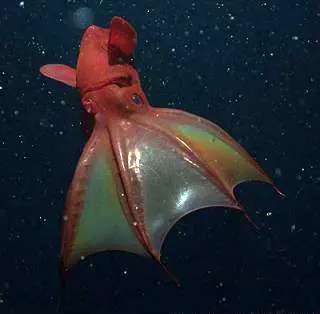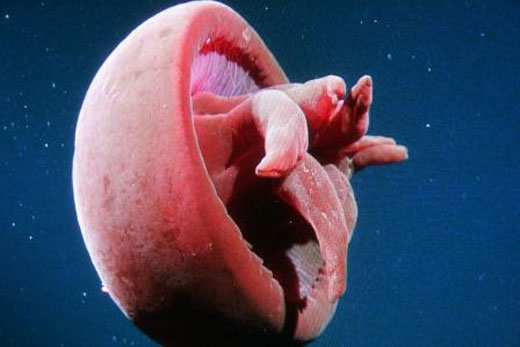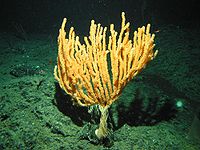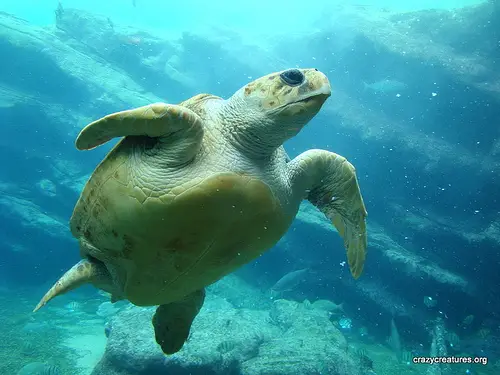Vampire Squid
The Vampire Squid (Vampyroteuthis infernalis) is the only surviving member of the order Vampyromorphida which means it’s a phylogenetic relict. Its scientific name literally means “Vampire squid from hell”, but despite this it doesn’t actually suck the blood out of other creatures of the sea.
Its size is relatively small – only 30 cm (1 ft) and it has a very gelatinous form, in resemblance to jellyfish more than a squid or an octopus. Its looks, however, much like the looks of other deep-sea creatures, seem taken from horror movies – red or blue eyes, brown skin, its tentacles in front of the mouth, connected with a webbing of skin, looking much like a large mouth, used to attach itself to the prey in order to suck blood. This might be the reason for its threatening name.
In reality, this creature’s diet consists of copepods, prawns and other tiny animals found in the great sea depths the Vampire Squid lives in. The Vampire Squid’s body is covered with photophores which are light producing organs the creature uses to increase visibility in the almost pitch-black depths of 600-900 metres (2,000-3,000 feet) it lives in.
The Vampire Squid has adapted to living in the deep parts of the seas – their metabolic rate is very slow, which means they can live for a long time with no food. It also means, that this animal has weak musculature and relies mainly on its agility and subtlety to stalk upon its prey.
Little is known about the reproductive habits of the Vampire Squid. They are thought to have a slow reproduction period, laying few small and opaque eggs at a time. The hatchlings are only 8mm long, webbing between their arms is lacking and they have a pair of fins near their eyes, which later disappear in a result of metamorphosis.
When confronted by a bigger predator, the Vampire Squid can cover its body with the arms or eject a cloud of bioluminescent mucus as opposed to ink, which other squids use. The Vampire Squid’s low metabolic rate, however, means it will rarely do this and most often it will try to avoid any waste of energy, avoiding all danger it sees.
So, in fact, these not very attractive deep sea squids don’t live up to the expectations of their symbolic name. They’re far from being the dangerous and predatory creature most people would think of, hearing its name. To humans, the Vampire Squid is no more dangerous than a jellyfish and it is arguably a little less dangerous than a crab, that could at least pinch you in the foot.





Wow there massevive thank you by the way for helping me finnish my project
Glad it helped :)
Hi-
Love the site. Please double check your grammar/punctuation.
“It’s” means “it is”. In a sentence like “the vampire squid can cover its body with the arms…” there should be no apostrophe in the “its”. Please help our kids learn proper grammar/punctuation! Thanks alot.
Hello, Bridget!
Thanks for the interest in the site. Thanks for pointing out the mistakes – they have been corrected. We are aware of the difference between “its” and “it’s” and hopefully no more of such typos will be made in the future. :)
a shame that you couldn’t include the way it looked with its mantle draped over its body.
It’s ‘a lot’.
you wouldnt happen to know, what eats them would you?